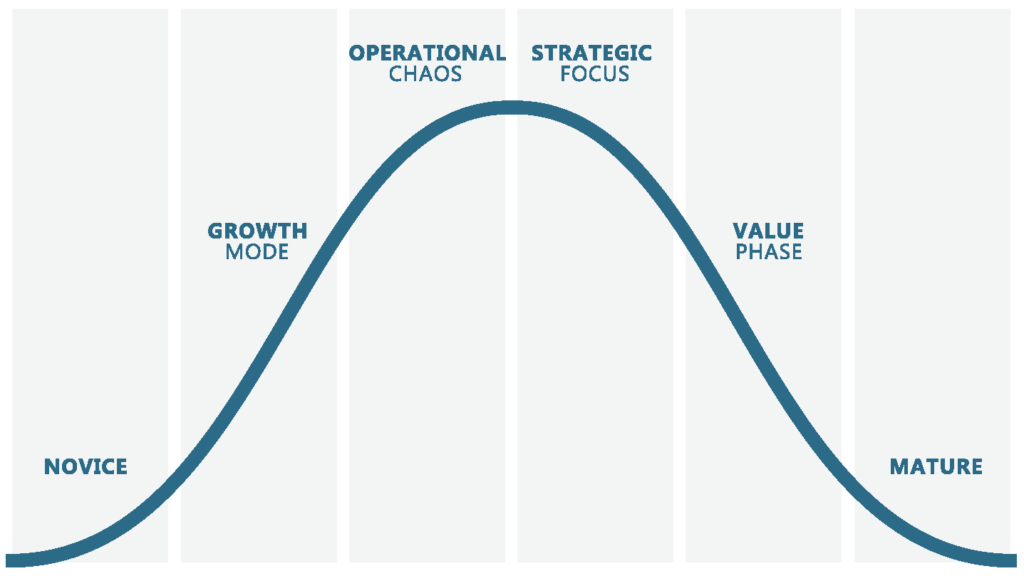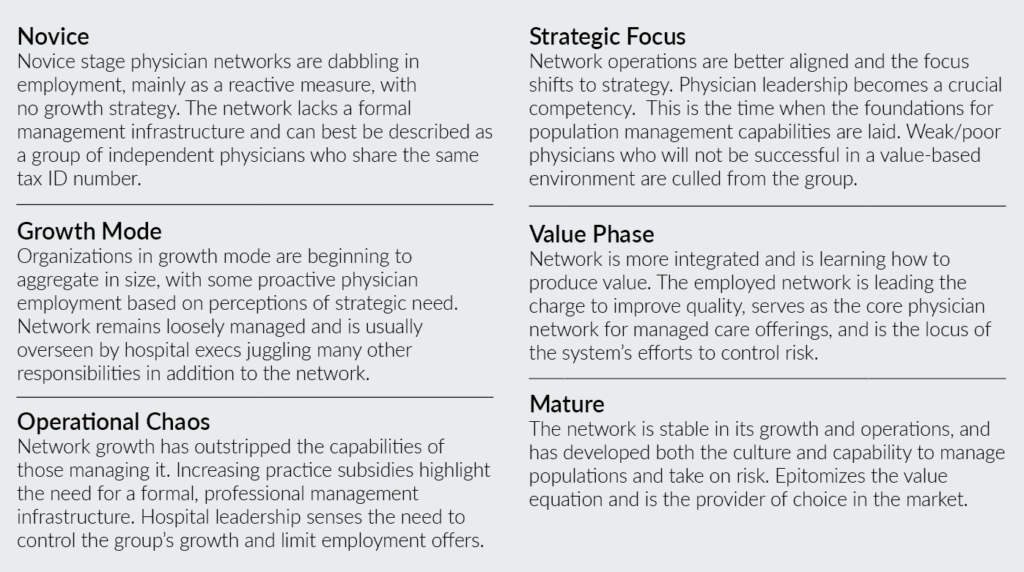The except below is from HSG’s whitepaper on the Physician Network Life Cycle, published (December 2016) at AHA Health Forum (Industry White Papers & Insights).
Click here to download
In HSG’s work with Employed Physician Networks, we frequently find the same set of core challenges during the evolution of Employed Physician Networks:
• External pressures have driven physicians in the market to predominantly seek employment.
• Competition between health systems over limited physician resources has resulted in rapid acquisition, generating precipitous growth in the number of practices and providers the employed network is actively managing.
• The growth in practices and providers far outstrips the management capabilities of the existing network management infrastructure.
• Subsidies for the employed network rapidly escalate, causing senior executive and board anxiety, resulting in a deceleration of the groups growth and an insular focus on “getting the finances under control.”
• Progress for the group becomes measured by “how much are we losing” versus “how much value is the network contributing to the organization?” resulting in a day-to-day mindset that forsakes the capabilities that a group must build to generate long-term value for the health system.
Given the crucial role of the Employed Physician Network in executing the health system’s strategy, management executives and their teams must evolve beyond solely tackling day-to-day decisions and develop a focused, long-term plan for building the capabilities that will generate success into the future.

The HSG Physician Network Life Cycle is composed of six distinct stages through which physician networks evolve. Each of these stages has its own management challenges and corresponding initiatives that must be tackled for the group to be able to successfully move on to the next stage of maturation and performance. Management capabilities and focus must evolve over time and engagement of providers must be consistent with the needs of the network. The needs of each of these stages become foundational elements for the future operation of the network and, therefore, must be addressed to promote long-term success. The six Life Cycle stages are:

If you have questions or would like to explore how to work with the Physician Network Life Cycle to evolve your network, please contact Travis Ansel, Director, at (502) 814-1182 or TAnsel@HSGadvisors.com.
